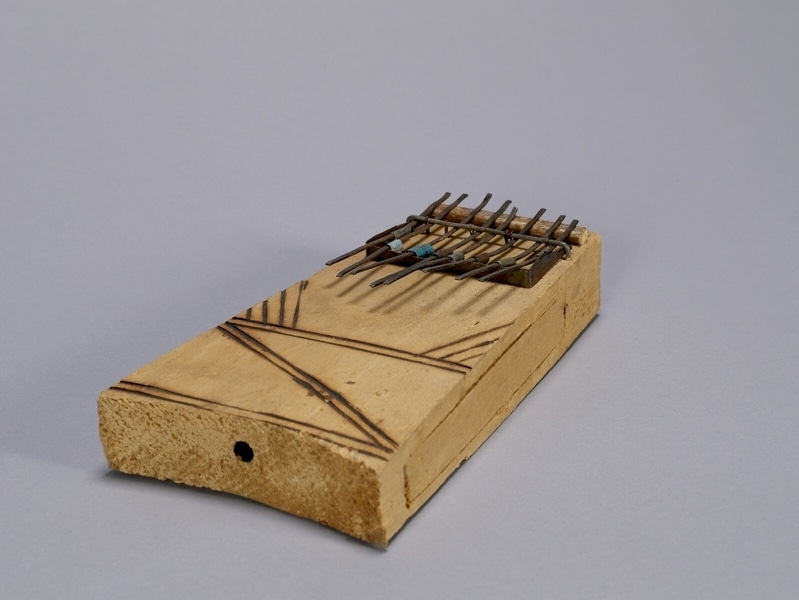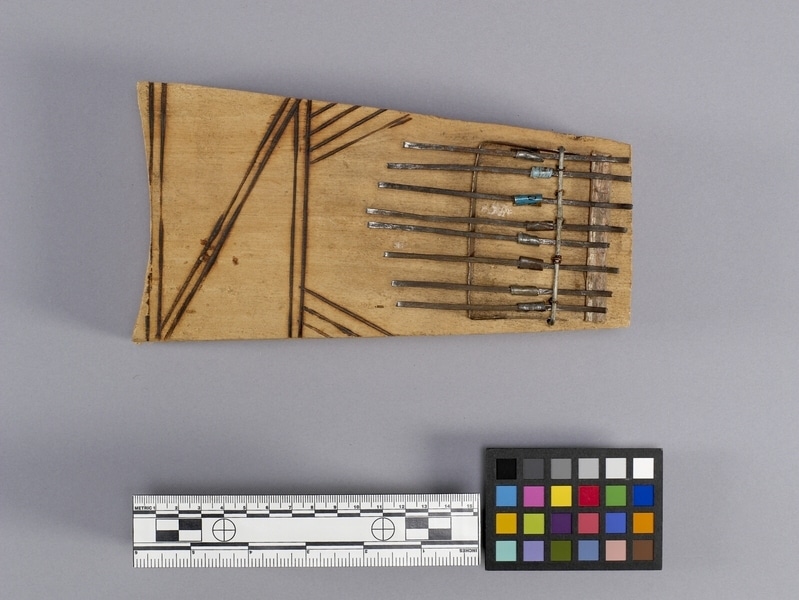Thumb Piano Item Number: Ab302 from the MOA: University of British Columbia


Description
Trapezoid-shaped block of wood, hollowed out and re-closed on one side with a piece of fitted wood. There is a hole in the bottom of the base and at the curved end for sound. There is a hand grip carved into the wood at the end where the metal prongs are attached. Eight metal parallel prongs are held in place by a cross piece metal bar attached to the base by wire loops threaded and resting on a right angled strip of metal at one end, and a strip of wood at the other. There is a round metal sleeve on each prong. The strips of lightweight metal are wound around the base of each prong (or key) to act as resonators. The top face has a linear design burnt into the wood.
History Of Use
The mbira (Shona language) is a plucked idiophone (or lamellaphone) that has been in use for thousands of years, and is played widely throughout the African continent. It is known by many different names, e.g., sanza, kalimba, kilembe, likembe, kadono, akogo, timbrh, and thumb piano, and has undergone regional variations, but the general style and function remain consistent. The instrument has been played for both secular and ceremonial use, e.g., around the fire during social evenings, or to commicate with the ancestors.
Specific Techniques
The metal sleeves are little strips of light metal that are wound around the base of each key or prong to act as resonators or buzzers which add to the texture of the overall sound.
Item History
- Made in Southern Africa, Africa
- Owned by Coolie Verner before December 24, 1979
- Received from Coolie Verner (Donor) on December 24, 1979
What
Who
- Culture
- Southern African
- Previous Owner
- Coolie Verner
- Received from
- Coolie Verner (Donor)
Where
- Holding Institution
- MOA: University of British Columbia
- Made in
- Southern Africa, Africa
When
- Ownership Date
- before December 24, 1979
- Acquisition Date
- on December 24, 1979
Other
- Condition
- good
- Accession Number
- 0581/0036